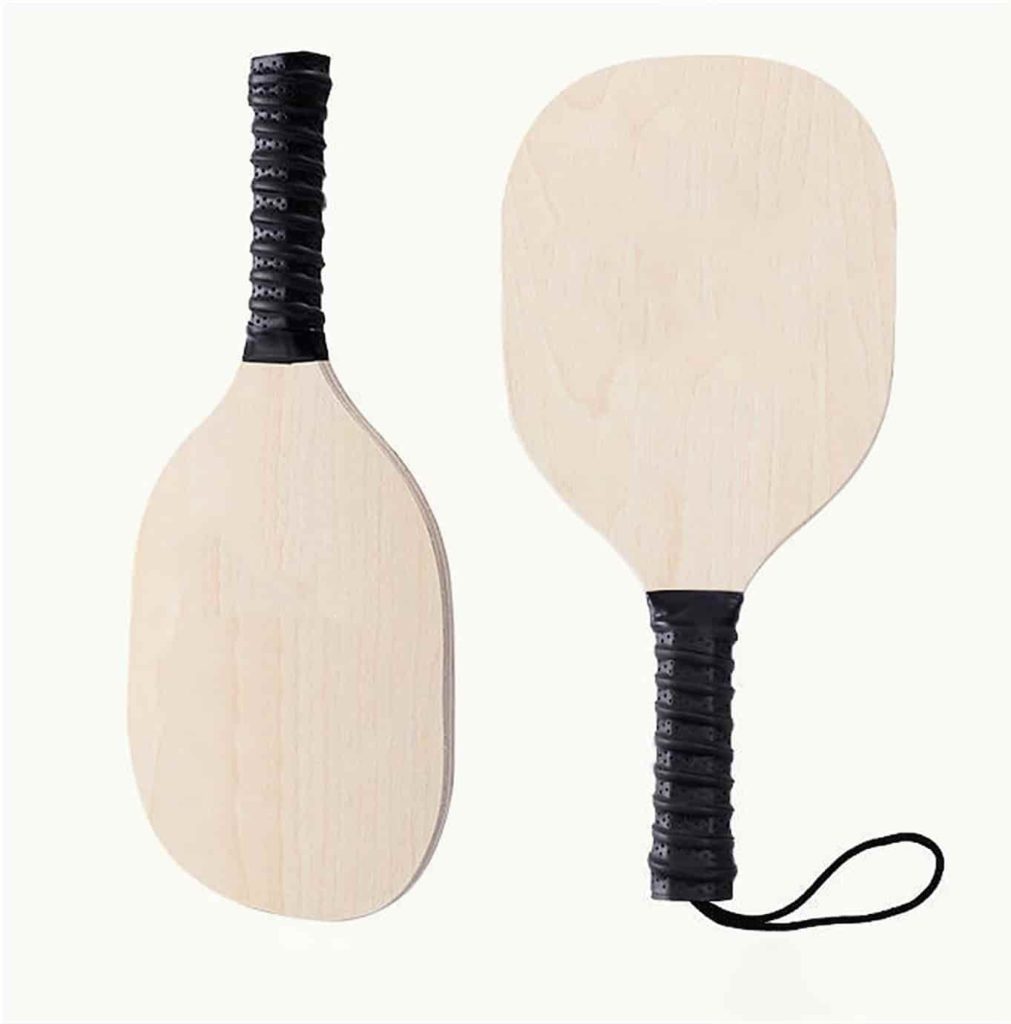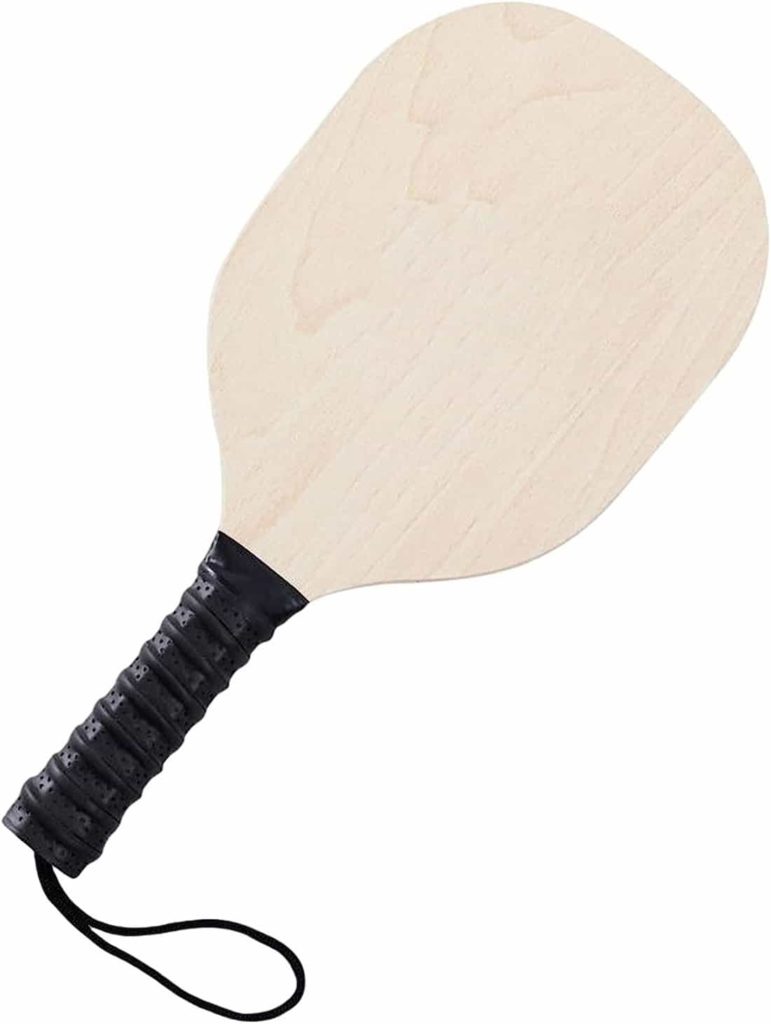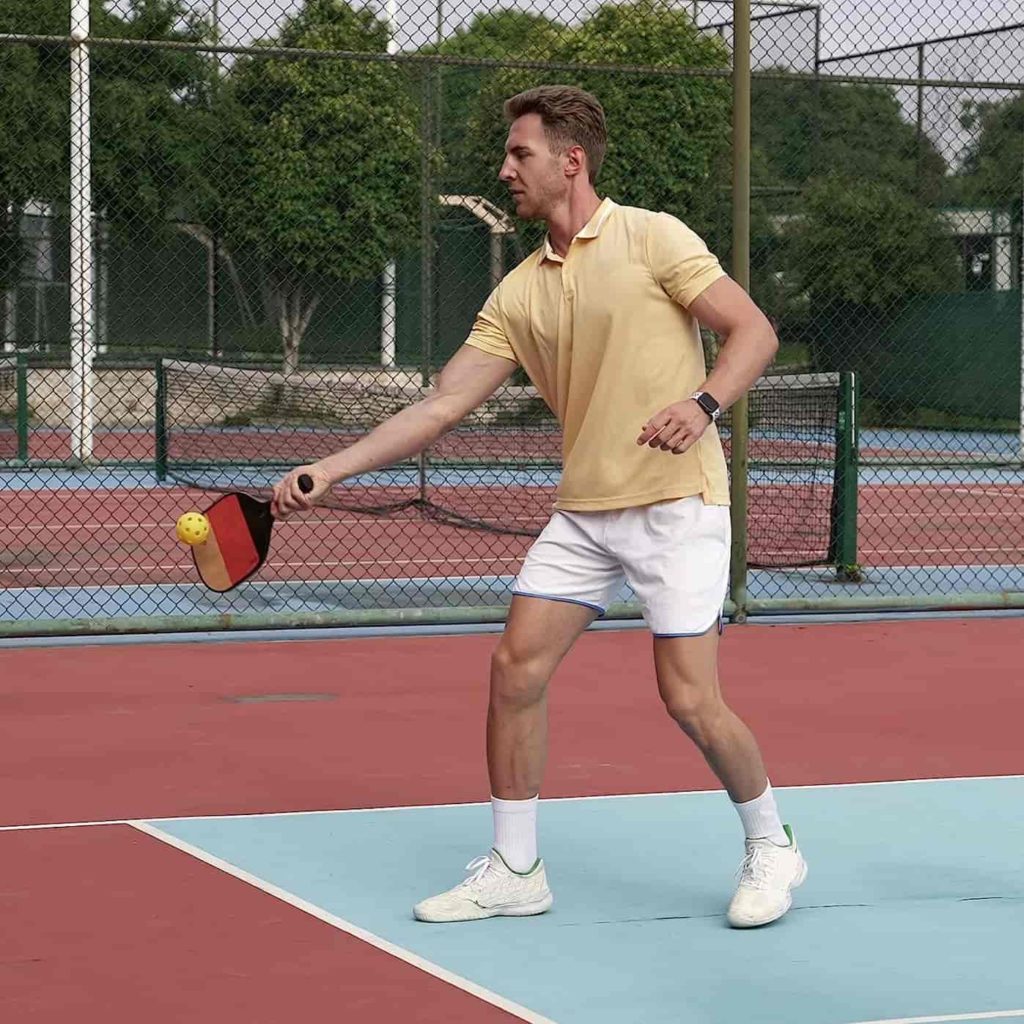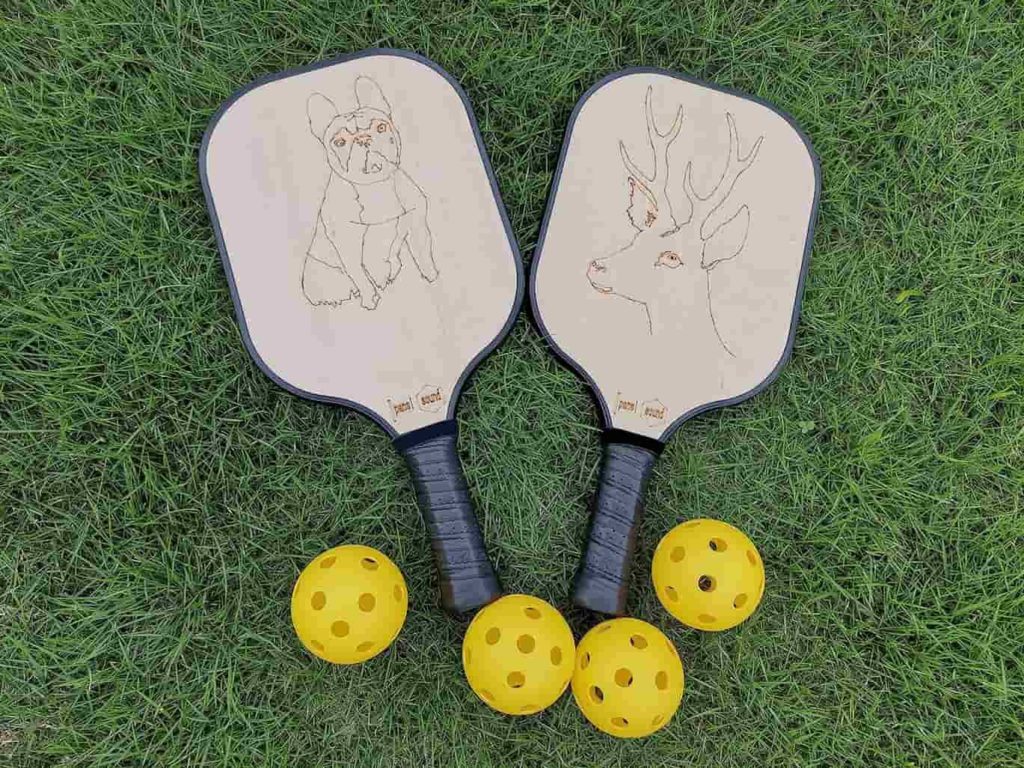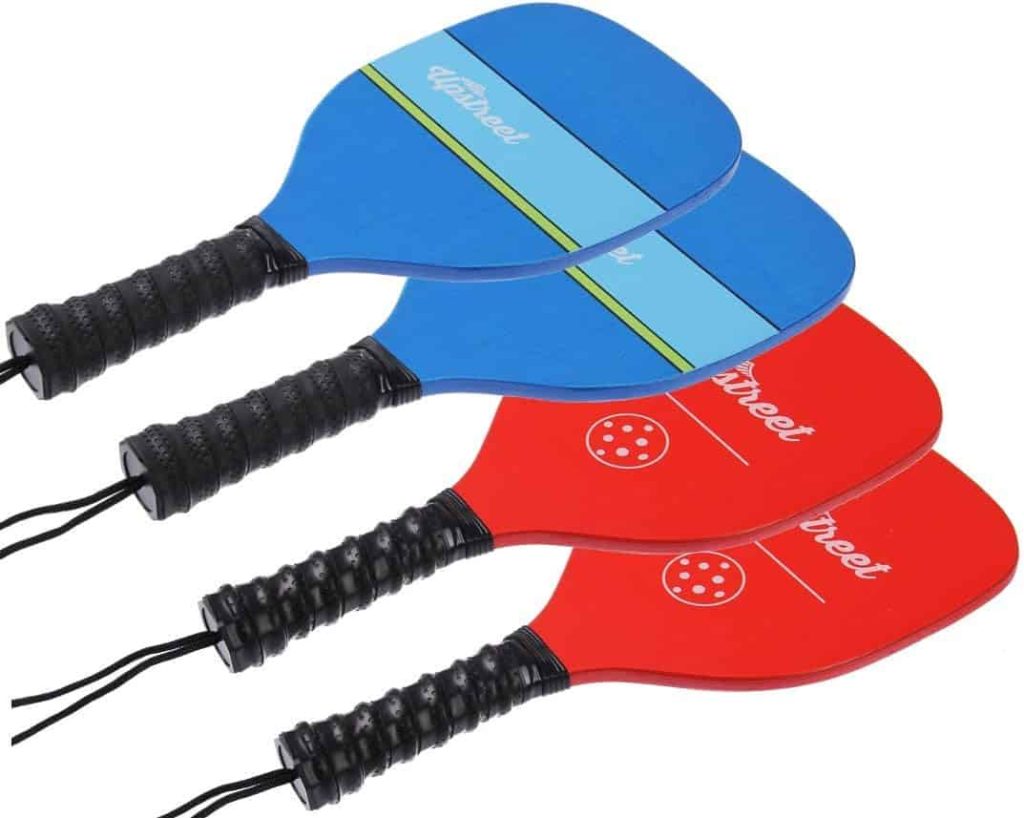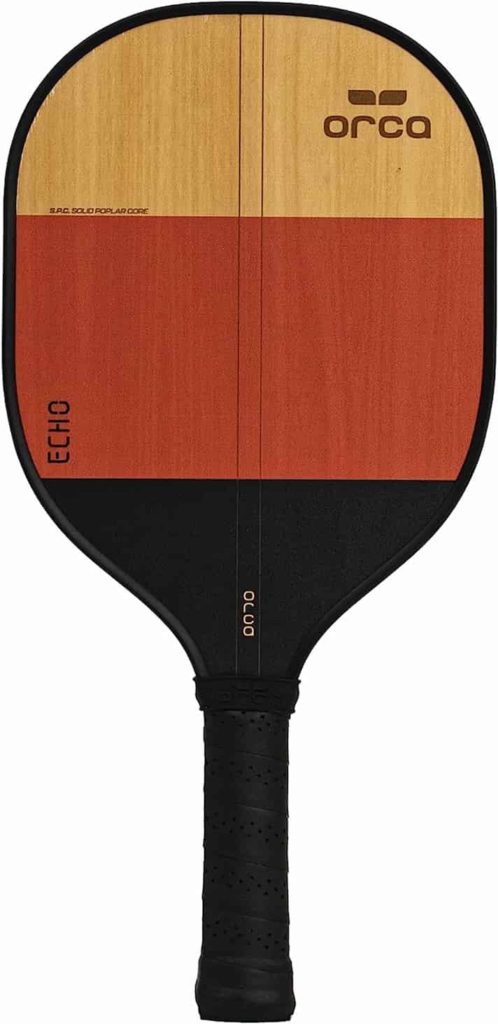Introduction
Pickleball is a sport that is gaining popularity faster than any other sport in the world.This fast-paced game is played on a court with a net and can be enjoyed by players of all ages and skill levels. However, to fully experience the game’s excitement and have a chance at winning, it’s crucial to choose the right pickleball paddle.
In this article, we will explore the benefits of wood pickleball paddles and why they are an excellent choice for players of all levels. We’ll also discuss the types of wood paddles available, factors to consider when choosing one, as well as care and maintenance tips.
What is Pickleball?
For those who are new to pickleball or need a refresher, pickleball is a sport played on a court with similar dimensions to a badminton court. Two or four players use solid paddles made of various materials (including wood) to hit a lightweight ball back and forth over the net. The ball is served underhand diagonally across the court until it clears the non-volley zone (a seven-foot area near the net).
Once this occurs, both teams may hit the ball back-and-forth without having to clear that zone again. The objective is for your team to hit shots over the net that your opponent cannot successfully return within bounds on your side of the court.
Points are awarded when an opponent fails to return or hits out-of-bounds. The first team to reach 11 points (with at least two points more than their opponent) wins.
Importance of Choosing the Right Paddle For Pickleball
When playing pickleball, selecting the right paddle can make all the difference in terms of comfortability and performance. A player’s choice should be based on their playing style (aggressive vs. defensive), playing frequency (casual vs. competitive), and personal preferences (length, weight, grip size). A paddle that is too heavy or too light can negatively impact a player’s accuracy and power, while a wrong grip size can lead to discomfort or even injury.
Brief History of Wood Pickleball Paddles
Originally, pickleball paddles were made from perforated wood or aluminum materials. As pickleball became more popular and advanced in the 1980s and 1990s, manufacturers started developing paddles made from composite materials such as graphite, fiberglass, and carbon fiber.
However, recently there has been a resurgence of wooden paddle use due to their durability and unique feel. Wooden paddles have been used since the early days of pickleball when it was played on concrete courts with hand-carved paddles.
The popularity of wood paddles declined during the 1990s when lighter composite materials became available. However in recent years, they’ve become increasingly popular again because they offer certain advantages over their synthetic counterparts.
Choosing the right paddle is crucial for any player looking to get involved in this fast-paced game. In the next few sections we will explore why wooden pickleball paddles are an excellent choice for players at all skill levels.
Advantages of Wood Pickleball Paddles
Durability and Longevity
One of the most significant advantages of wood pickleball paddles is their durability and longevity. Unlike composite or graphite paddles, which can crack or break easily, wood paddles are built to last. This durability is due in part to the natural strength and resilience of the materials used in wood paddles.
For example, most solid wood paddles are made from dense hardwoods like maple or birch, which can withstand heavy use without showing signs of wear and tear. Additionally, wood pickleball paddles are often reinforced with fiberglass or other materials to increase their strength even further.
This reinforcement helps prevent cracking and splintering that can occur over time with other types of paddles. With proper care and maintenance, a good quality wood paddle can last for years.
Comfortable Grip
Another advantage of wooden pickleball paddles is their comfortable grip. Most wooden paddles feature a rubber grip that is comfortable to hold even during long games. The grip material absorbs sweat, reducing slippage during play.
Wooden grips also provide a natural tactile feel that many players find more comfortable than the hard plastic grips found on other types of paddles. This enhanced comfort makes it easier for players to focus on their game rather than worrying about hand fatigue.
Consistent Performance
Consistency in performance is another benefit provided by wooden pickleball paddles since they don’t have variable manufacturing processes due to automation. Whether you’re playing competitively or just for fun, having a paddle that performs consistently can make all the difference in your game. Because wooden pickleball paddles are made from natural materials rather than synthetics, they tend to provide more consistent performance over time. The sweet spot of wood paddles wear much slower than that of graphite or composite paddles. Wood paddles perform and feel the same every time you play.
This consistency helps players develop muscle memory while playing; they know how their paddle will perform because it will not change due to manufacturing variation or environmental factors. Wooden paddles also offer a more predictable touch, which can be particularly useful for players who prefer to use spin on their shots.
Affordable Price Point
Wooden pickleball paddles are an affordable option compared to the cost of graphite and composite paddles. The materials used in wood paddles are widely available and less expensive than the advanced materials used in other types of paddles.
Additionally, wood paddle construction is more straightforward and does not require complex machinery or automation, reducing production costs further. Despite their affordability, wooden pickleball paddles still provide excellent performance and durability making them a popular choice among many players.
Types of Wood Pickleball Paddles
Solid Wood Paddles: A Classic Choice
Solid wood pickleball paddles are a classic choice for those who appreciate the traditional feel of the game. These paddles are made entirely out of wood and have been used since the inception of the sport. Made from high-quality hardwood such as maple, they are known for their durability and longevity.
They provide players with a comfortable grip and consistent performance, which is why they remain a popular choice among many players. One benefit of solid wood paddles is that they tend to be heavier than other types of paddles, providing players with more power in their shots.
Additionally, since they do not have an inner core like composite or polymer paddles, they produce less noise on contact with the ball. The downside to solid wood paddles is that they can be heavier than newer materials, which may cause fatigue and a difference in swing speed for some players.
Laminated Wood Paddles: A Blend of Performance and Style
Laminated wood pickleball paddles are made by layering thin sheets or plies of wood together to create a composite paddle face. This process creates a strong and durable paddle while maintaining the classic look and feel of solid wood paddles. Additionally, laminated wooden paddles can produce more power than solid wooden ones due to their lighter weight.
One advantage to laminated wooden blades is that they can be customized with different types or colors of wood in order to create unique designs or patterns on the paddle face. This makes them perfect for those who want both high-performance and style from their equipment.
Hybrid Wood Paddles: The Best of Both Worlds
As its name suggests, hybrid wood pickleball paddles combine elements from both solid and laminated wooden blades to create an optimal blend of performance characteristics. The paddle face is made from a combination of both types of wood, which offers a balance between the durability and consistency of solid wood blades and the lightweight performance of laminated ones. Hybrid wooden paddles are ideal for those who want a paddle that can handle anything on the court.
They offer both power and control, making them perfect for players who want to play aggressively while still maintaining accuracy in their shots. Additionally, hybrid wooden paddles tend to produce less noise than composite or polymer ones, making them ideal for use in public places such as parks or community centers.
Factors to Consider When Choosing a Wood Pickleball Paddle
Weight and Balance: Finding the Right Combination for Your Needs
When it comes to choosing the right wood pickleball paddle, weight and balance are two important factors that can affect your overall performance on the court. The weight of your paddle can determine how much power you can generate with each swing, while the balance can impact your control and precision.
Generally speaking, lighter paddles are easier to maneuver and provide less strain on your arms during play. However, heavier paddles tend to pack more punch and offer more stability in shots.
So, it’s essential to find a comfortable weight range that matches your playing style. Balance also plays an important role in determining how a paddle feels in your hands.
A well-balanced paddle ensures that weight is distributed evenly throughout the handle and head of the paddle, giving you better control over every shot you make. Therefore, paying attention to both factors is crucial when selecting a wood pickleball paddle.
Grip Size and Shape: Understanding Your Hand Size for Maximum Comfort
Another crucial factor when buying a wood pickleball paddle is grip size. A comfortable grip allows players to maximize their performance by letting them maintain proper form while playing without feeling uncomfortable or constrained.
Grip sizes typically range from small (4 inches) to large (4-3/4 inches), depending on hand size. Selecting the right grip size will allow players to have more control over their shots as they can comfortably wrap their fingers around it without having too much wiggle room or discomfort.
The shape of your grip should also be considered as this impacts how your hand lies on the handle. Some grips have rounded edges while others may feature flatter sides, so finding one that suits your individual preferences helps maximize comfort during gameplay.
Surface Area and Shape of Paddle Face: How it Affects Your Shot Quality
The surface area and shape of the paddle face can also play a significant role in determining shot quality. Generally speaking, larger surface areas help players make good contact easier, especially for beginners. However, this also means less control over their shots because of the broader paddle face.
On the other hand, smaller paddles offer better control over your shots but may require more skill and experience to use effectively. Hitting the sweet spot is harder. The shape of the paddle face is also an important consideration when selecting a wood pickleball paddle.
Paddles with rounded edges are more suited for power shots while rectangular paddles offer better precision. Players should consider if their chosen paddle is approved by official pickleball associations such as USA Pickleball or International Pickleball Federation (IFP), as this ensures that they meet regulations and standards on size and weight limits. This is only important if you’re playing in regulated tournaments.
Noise Level: The Importance of Quiet Paddles
Noise level is an essential consideration for wood pickleball paddles as some materials generate more noise than others. For instance, solid wood paddles tend to be louder compared to laminated or composite materials.
When choosing a wooden pickleball paddle, consider its noise level since certain locations have restrictions on noise levels during gameplay; therefore, quieter paddles may be necessary in certain areas or situations. Quieter paddles are ideal as they improve concentration levels during play by reducing distractions caused by excessive noise levels from loud paddles.
Care and Maintenance for Wood Pickleball Paddles
Cleaning Tips for Maintaining the Quality of the Paddle
Maintaining a clean pickleball paddle is essential to keep it in good condition. Dirt, sweat, and other substances can accumulate on the surface of the paddle, affecting its performance.
The cleaning process depends on what type of wood pickleball paddle you have. For solid wood paddles, start by wiping down the surface with a damp cloth.
Avoid using harsh chemicals or abrasive materials that may damage the wood. Use a soft-bristled brush to remove dirt from grooves or crevices on the surface of the paddle.
For more stubborn stains, mix warm water with mild soap and dip a soft cloth into it to scrub off dirt gently. Laminated wood paddles are much easier to clean than solid wood paddles.
Begin by spraying an all-purpose cleaner onto a damp cloth and wipe down its surface gently. Rinse off any remaining cleaning solution with another damp cloth soaked in water after you have cleaned it well.
Storage Suggestions to Extend the Life Span
When not in use, proper storage is necessary to extend the life span of your wood pickleball paddle. One primary concern is keeping it away from extreme temperatures or humidity because this could cause warping or cracking over time. Avoid storing your wooden pickleball paddle in direct sunlight or near any heat sources like radiators, fireplaces, stoves etc., as this can cause drying out which leads to cracking or warping.
To store your wooden pickleball paddle correctly, put it inside an approved padded bag that will keep moisture and humidity levels at bay. If you reside in regions with high humidity, this will be beneficial especially if the paddle is stored for extended periods without use. It will also assist in maintaining its form and minimizing potential harm during transportation. Taking good care of your pickleball paddle will ensure it lasts for a long time, performing well even after several years of use.
Cleaning and storage are two vital aspects that should not be overlooked. Simple steps like wiping down the paddle after each game and storing it correctly can go a long way in preserving its condition for years to come.
Conclusion
A Winning Choice for All Players
Wood pickleball paddles are an excellent choice for both beginners and experienced players. They provide an affordable option that offers durability, consistency, and comfort. The different types of wood paddles available offer a variety of performance options to match any player’s preference.
When choosing a wood pickleball paddle, it is important to consider factors such as weight and balance, grip size and shape, surface area and shape of the paddle face, and noise level. Taking proper care of your paddle will help extend its life span by using our basic cleaning tips and storage suggestions.
Whether you are just starting out or have been playing for years, a wood pickleball paddle is an excellent investment in your game. With the right care and maintenance practices in place, you can expect your wooden paddle to last for many games to come.
An Eco-Friendly Option
In addition to the many benefits mentioned above, using a wooden pickleball paddle is also an eco-friendly choice compared to other materials like plastic or composite. As demand for sustainability grows worldwide across industries from fashion to food packaging – sports equipment manufacturers are gradually switching from non-renewable materials towards natural alternatives. By investing in a quality wood pickleball paddle – players not only get great performance out of their equipment but also make a positive impact on environmental sustainability practices too!
The Perfect Choice: Tradition Meets Innovation
Wooden paddles have been used since the beginning days of Pickleball when it was invented back in 1965. The creation was meant as a fun backyard game that could be played across generations – simple enough without requiring expensive or specialized equipment.
Even as newer materials emerge in the market such as graphite or composite blends – traditionalists still prefer wood paddles for its affordable pricing, durability, and consistent performance. By investing in a wood paddle, you can feel good about preserving tradition while still embracing innovation – the perfect blend of old and new.
Whether you are a seasoned player or just starting out in the game of pickleball – wooden paddles have something to offer for everyone. With a little bit of research into different types, factors to consider when choosing one along with proper care and maintenance practices – you can be sure of having a long-lasting paddle that will serve your needs for years to come while contributing positively towards environmental sustainability practices too! If you’ve never tried playing with a wooden paddle, go ahead and try it out!

